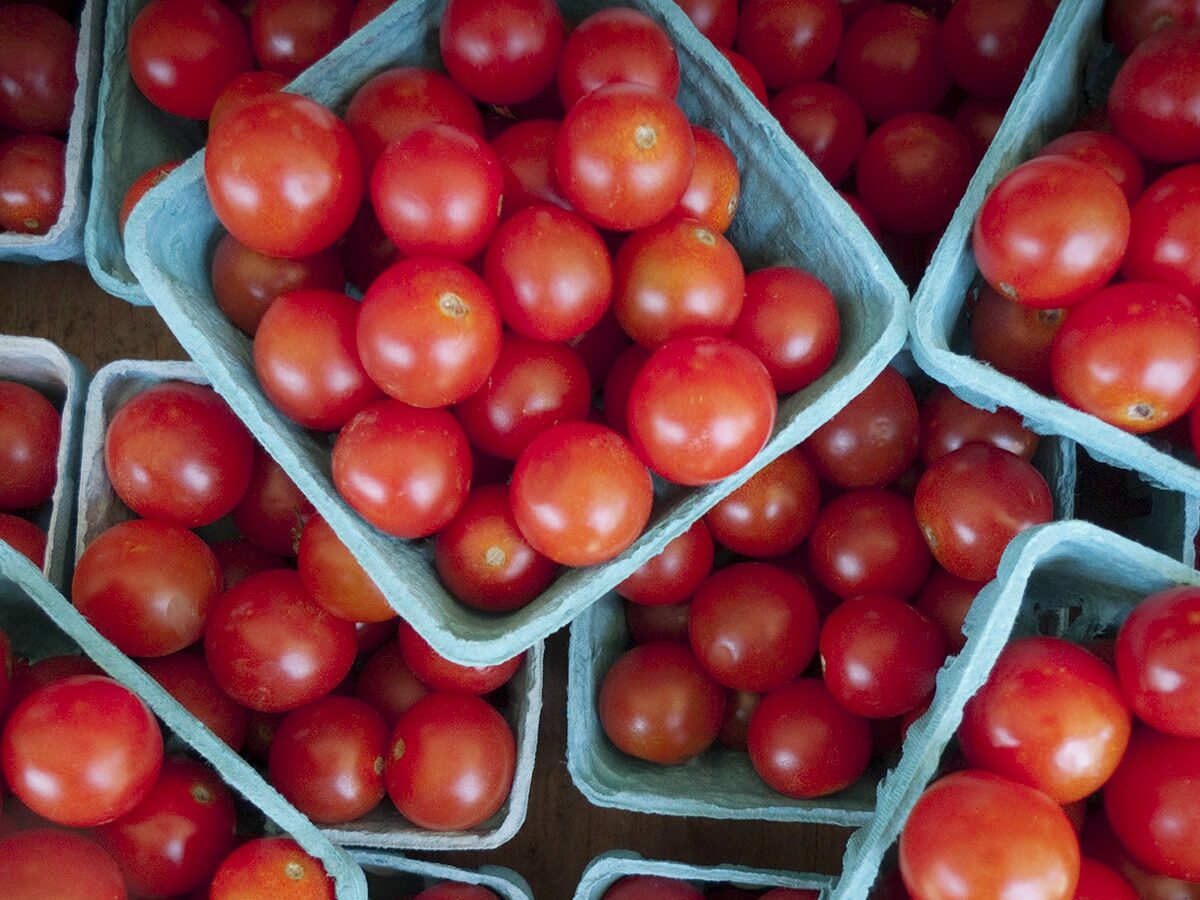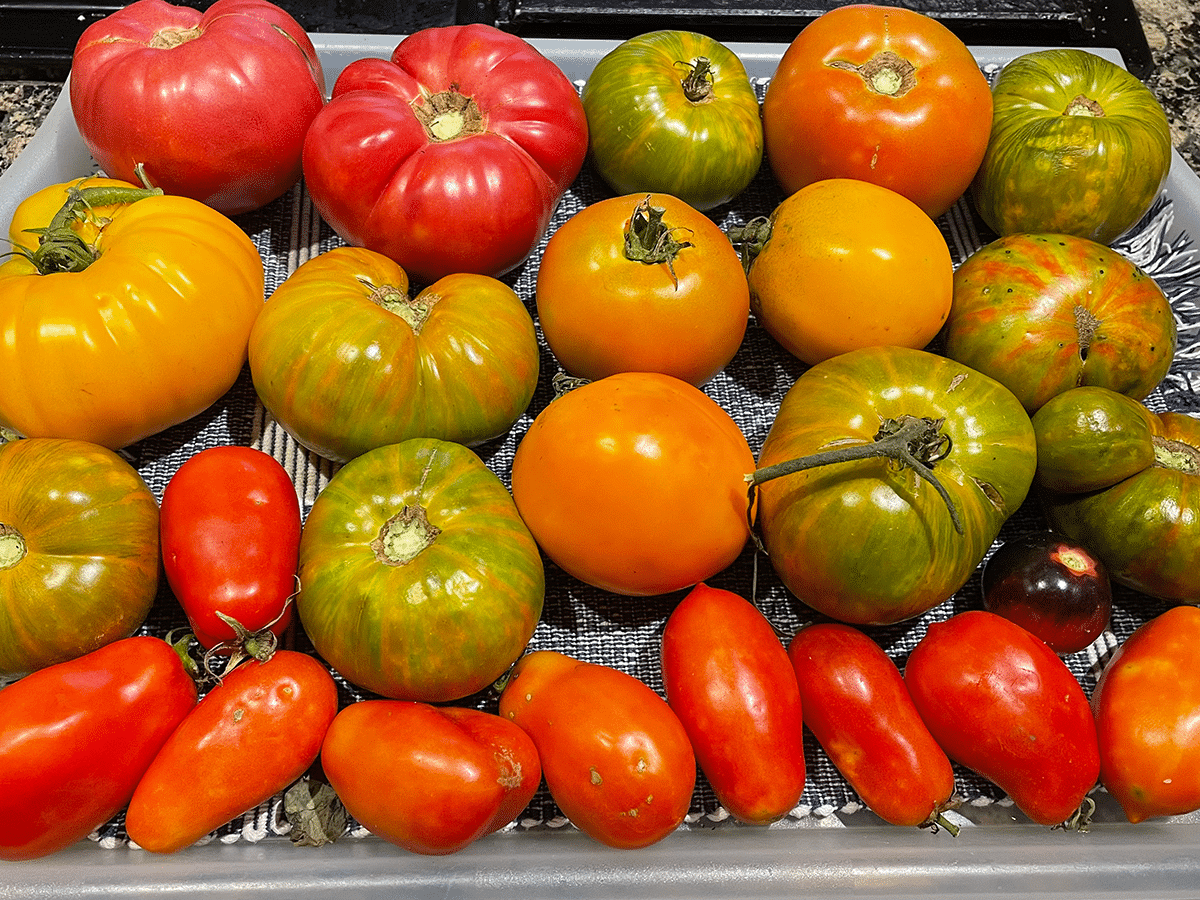Whatever variety of tomato you choose for your culinary creations, make sure it is one that you absolutely love.
Obsession
I don’t know about you, but every year, starting in mid March, I am nearly obsessed with planting, growing and harvesting my favorite tomato to cook with and eat. I dream about a really ripe one sprinkled with salt and eaten like an apple. Favorite recipes turn over in my head as harvest time draws near, and I think how lucky we tomato lovers are.
When Spanish explorers returned from the new world with the tomato, it was looked at with disdain and fear by the citizens of Spain. Because tomatoes belong to the nightshade family, these savory fruits were thought to be poisonous. According to oral history, when the rejected fruit made its way into Italy by way of the Moors, a courageous person stood in the midst of a crowd in the center of an Italian town and devoured a tomato. Amidst the shock, he proved to all it was not poisonous but delicious. That changed the course of culinary history, influencing not just Italian cuisine but other food ways as well. If the Spaniards had the ability to see the future and how the tomato would impact so many foods of the world, they might have looked at their farming and culinary habits differently. Eventually, even the Spaniards added the tomato to their Gazpacho.

Fruit or vegetable?
Though technically a fruit, the tomato is often lumped into the vegetable group.
No matter what the category, tomatoes are included in 90% of homegrown gardens. Even people without land plant them in barrels, oversized flower pots and buckets. More people prefer tomatoes than any other homegrown ingredient. It is so popular, the tomato was designated the official state fruit of Ohio and there are contests at state fairs across the country for the biggest and best.
Growing tomatoes is not difficult when using soil that has been enriched with bone meal for phosphorus, manure for nitrogen, and wood ash for potassium. Composted horse, chicken and rabbit manure were and are highly recommended — unless you have a source for elephant manure, which is considered the best.
Techniques to improve the tomato for size, color, flavor and growth are becoming increasingly more sophisticated. Seed catalogs offer a vast array of varieties. Take your pick from heirloom tomatoes with whimsical names like Mortgage Lifter, tiny cherry and grape tomatoes, or the meatier types like beefsteak. Colors include yellow, gold, purple, red-striped, green-striped, even “black” and “white.” My favorite, the heirloom Heart of an Ox variety, is grown in both Portugal and Italy. Did it migrate from Portugal to Italy or from Italy to Portugal during the Roman occupation? I couldn’t tell you but I am doing my part to see that they flourish here in America.
The versatility and ease of growing is why the tomato resides in 90% of home gardens. The seeds I plant every year are saved from the previous year’s harvest to plant for the following year.
Surprising to many, tomatoes are used in Portuguese savory dishes. Over fifty percent of Portuguese stews and braises incorporate a peeled, seeded, chopped tomato, even a tablespoon of tomato paste. To make the base, called refogado, onions are sautéed in olive oil until translucent or lightly golden, then chopped tomato is added. The mixture is simmered, covered, until the tomato is partially dissolved and married to the onions. A cook will sometimes add a spoon of tomato paste when fresh tomatoes are not available or to add concentrated flavor to the chopped-tomato base.
In addition to meaty stews and braises, the Portuguese use tomatoes in dishes such as simple Tomato Rice (Arroz de Tomate), Chicken Stew (Galinha Estufada), and other aromatically-heady rice and vegetable dishes. Very ripe tomatoes are also used to make Tomato Jam (Doce de Tomate), a delightful cinnamon-and-lemon spiced jam which is enjoyed on toast as well as a filling for cakes and pastry. Whatever variety of tomato you choose for your culinary creations, make sure it is one that you absolutely love. ![]()
